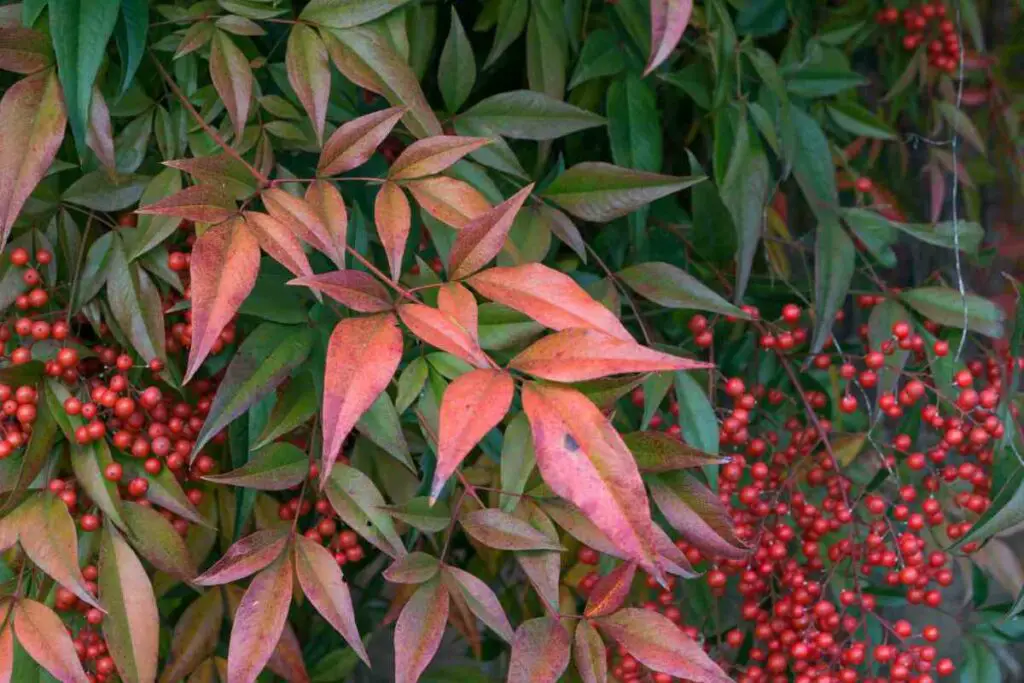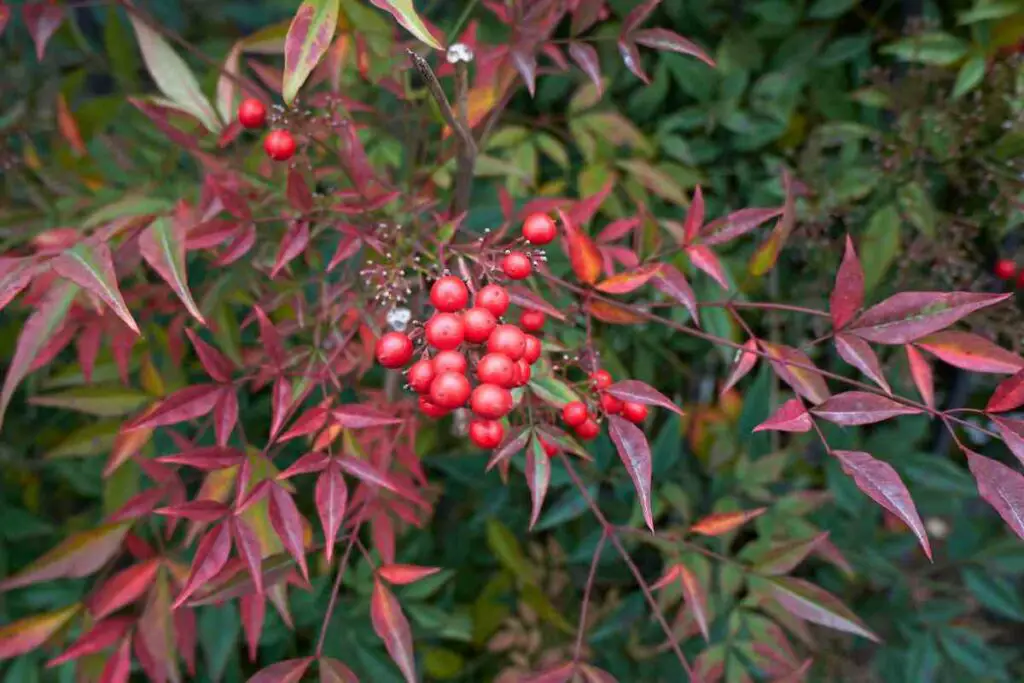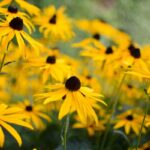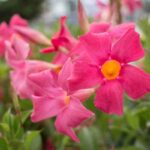You must be cautious when planting nandina (sacred bamboo) in your yard. These shrubs are an invasive species in the United States and can spread quickly. They also kill your other plants by overcrowding them and producing poisonous berries.
If you’re thinking of adding this plant to your backyard, you’ll want to read this article. There are plenty of reasons you’ll want to consider planting something else instead.

Table of Contents
Why Should I Be Cautious When Planting Nandina in My Yard?
You need to be very careful when planting nandina in your yard. These shrubs can cause harm to pets and young children, so you won’t want them around if you have them at home.
There are many more reasons to consider, so let’s break them down.
Is Nandina an Invasive Species?
Nandina is an invasive species in America. Many people brought plants from eastern Asia to their homes, where they planted them in their yards. It didn’t take long for the shrub to spread to several states. You’ll find it the most often in forested places today.
While it can grow anywhere with lots of trees, you’ll find it in Florida, Alabama, and Georgia. Although, there are several more states where it can grow.
Overall, nandina is an invasive species in the US. You should avoid planting invasive species on your property because they can kill native plants and establish monocultures.
Will Nandina Kill Other Plants?
As an invasive species, nandina can kill other plants in your backyard. These shrubs form dense thickets that crowd other plants so they can’t get any sun. Over time, they remove more of your native plants until you have limited biodiversity on your property.
The nandina can also easily spread to your neighbors’ homes, furthering the spread of invasive species. It can kill their plants too.
Does Nandina Have Toxic Berries?
The nandina bush also produces toxic berries, which can kill birds visiting your property. The berries can also be dangerous to your pets and small children if they were to ingest them.
The nandina berries contain cyanide, which is harmful if eaten in large amounts. It can make your pets sick, so avoid putting them in your backyard.
If you already have nandina in your yard, you can always clip the blooms after the shrubs in the summer. That way, the bush won’t produce any berries. Of course, you can always remove the berries yourself, so you don’t have to worry about animals or children eating them.
Why is Nandina Difficult To Remove?
Once you plant nandina in your yard, eliminating it is almost impossible. So, you won’t want to plant it unless you’re already committed to having it on your property forever.
The roots are extremely difficult to remove. Even if you miss a small piece of one, the bush will sprout up again in no time at all.
The reason it’s so hard to get rid of it is that it spreads underground rapidly. The remaining roots send new growths out every couple of weeks. If you don’t catch them soon enough, the shrub will return in full again.
Even landscapers have trouble getting rid of it completely, so it’s best not to plant it in your yard.

How Can I Identify a Nandina Plant?
Nandina has a very distinct appearance. It features narrow leaves and stems that look like bamboo, although it’s not related to bamboo. These leaves remain green during the winter, with the tips of the leaves becoming red.
This coloration makes it very attractive because it adds a “pop” color to people’s yards during winter, making it popular. Many also feel that the bright red berries look stunning against snowy backgrounds.
In short, you can identify nandina by looking for its unique leaf shape and berries. The plant is also very dense and forms a dense thicket over time.
What Can I Plant Instead of Nandina?
You’ll have plenty of choices for nice-looking shrubs native to your area. Florida hobblebush, American beautyberry, and buttonbush are all great options.
However, you can still get it if you don’t want any other plant instead of nandina. Plant nurseries in America sell sterile nandina so they won’t reproduce in your yard. You’ll receive a single bush, and you won’t have to worry about it spreading. You must make sure the plant is actually sterile before buying it.
Although that doesn’t remove all of the concerns with this plant, you at least won’t have to worry about it overtaking your backyard.
Does Growing Nandina Offer Benefits?
Since nandina is an invasive species, it won’t offer many benefits to your local area. It won’t feed local wildlife or pollinators. Many animals in the US don’t know what this plant is, so they won’t use it for anything.
That means planting it in your yard won’t benefit your ecosystem. You also can’t eat the berries that it produces.
So, many people who plant nandina in their yard only do it because it looks nice. However, you can plant other shrubs that look just as stunning and provide your local wildlife with more benefits.
Overall, there’s no real reason to plant nandina on your property other than for its appearance. Even if you plant a sterile version of the shrub, pollinators and local creatures won’t get any benefits from it.
Should I Remove a Nandina Plant?
You’ll need to be cautious if you have a nandina bush on your property. It can harm small animals and make your pets sick, so you don’t want to leave pets alone with it. You should also warn your children not to eat its berries.
Removing a nandina plant from their yard is the best option for many people. It doesn’t offer anything to your local ecology and can harm wildlife. The plant will even kill other plants as it spreads.
Even if the plant looks beautiful, it’s still best that you remove it. Working with a professional landscaper can make completing this project much easier since removing all the roots alone will be extremely difficult. It will come back if you miss a small piece.
So, we’d have to say it’s in your best interest to remove nandina plants. They’re not native to America, so they can harm your property. If you love plants, you wouldn’t want to see them die from overcrowding by a nandina bush.
How Do I Remove Nandina?
To remove nandina, you will need a garden fork, durable gloves, and pruning shears. Depending on how stubborn the plant is, you may need more tools. Once you have everything, follow these steps:
- Cut the berries off and throw them away whenever they come back. Doing so stops the spread of nandina seeds.
- Put your gloves on, grab the plant at the base of its stem, and pull. Most young nandina plants are easy to rip out of the ground. If it doesn’t come out, move on to the next step.
- Use a garden fork to dig around the base of the nandina. You want to dig deep into the soil, then tilt the fork up to lift the plant.
- Push the garden fork under the base of the plant, then lift it. Pull the plant out and set it aside.
- Next, you need to dig up as many roots as possible. Leaving them in the soil will cause the plant to return after a couple of weeks.
- Cover the nandina and leave it outside for a few weeks. It should die, making it safe to toss out without the threat of it spreading somewhere else.
- Lastly, make sure to check your yard for signs of nandina returning. You’ll need to pull up any new shoots and dig out the roots. You can also spray it with a weedkiller.
Getting rid of nandina can be a long process. As long as you’re consistent with removing any new shoots that you find, they should be gone in no time. If it seems overwhelming, you may want to contact professional landscapers or gardeners to help you. Pros have more experience dealing with these invasive plants.
Is Having Nandina Bad?
Nandina isn’t a bad plant when it’s in its native area. In eastern Asia, it has natural pollinators and benefits the environment. However, that’s not true in the United States.
The Florida Exotic Pest Plant Council categorizes it as a Class One invasive species, and the US Department of Agriculture says nandina is a “noxious weed.” The ASPCA has also stated that nandina is toxic to animals when consumed in large amounts.
So, if you have nandina, you’ll want to be very cautious with it. You should keep it from spreading by removing the berries when they appear. You’ll also help local birds and other creatures when you do this.
In short, having nandina can be bad. Many organizations say that it’s toxic, harmful, and invasive. To support your local environment, you’ll need to control the nandina, so it doesn’t spread. Most people decide the best course of action is for them to remove the plant instead.
Conclusion
In conclusion, it is important to exercise caution when planting Nandina in your backyard. Nandina, also known as heavenly bamboo, is a popular ornamental plant that is known for its lush foliage and red berries.
However, it is also considered an invasive species that can rapidly spread and crowd out native plants.
Therefore, it is important to research the laws and regulations in your area regarding planting Nandina, as well as to be mindful of the potential impact that it can have on the local ecosystem.
Additionally, it is important to regularly maintain the plant, removing any unwanted growth and berries to prevent the spread of the plant.
- How to Build a Planter Box for Bamboo: A Step-by-Step Guide

- Can Robotic Lawnmowers Handle Steep Slopes?

- Do You Need a Specific Lawn for a Robotic Lawnmower? Expert Advice

- Are Robotic Lawnmowers Safe for Pets and Children? Safety Features of Robotic Lawnmowers

- Why Use Robotic Lawnmowers? Advantages of Using a Robotic Lawnmower

- Is the GARDENA SILENO City 300 Cordless or Corded? A Clear Answer














